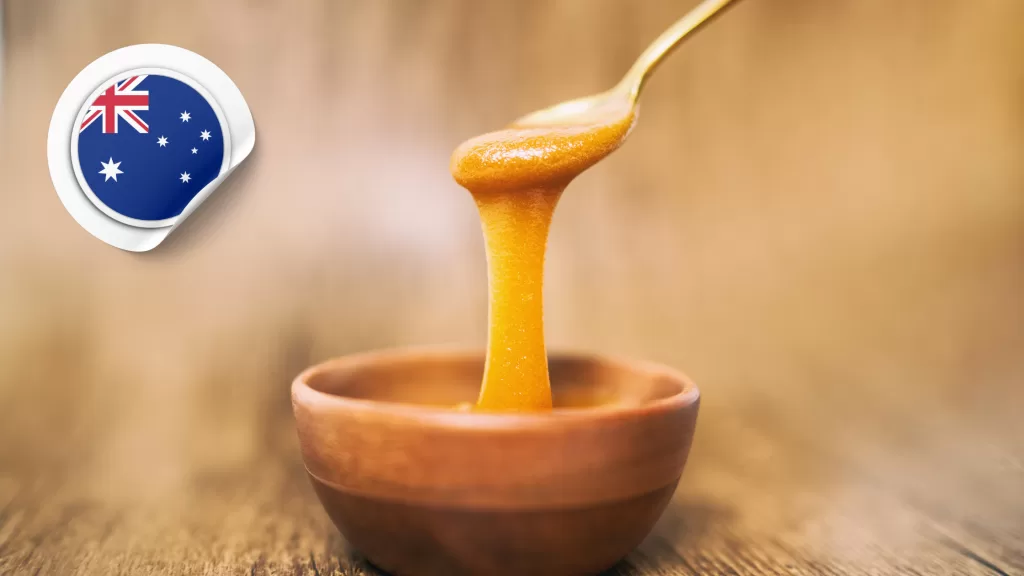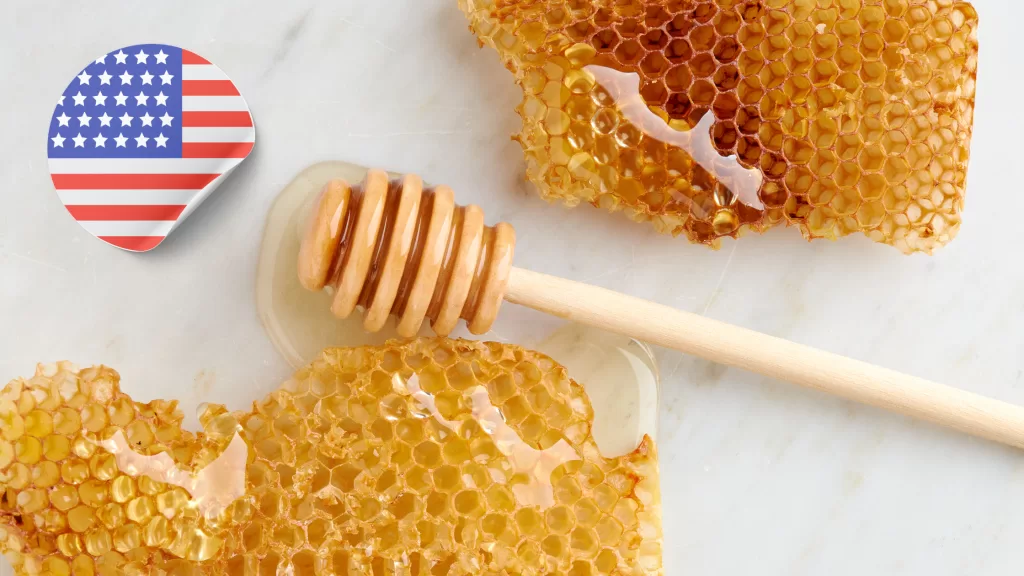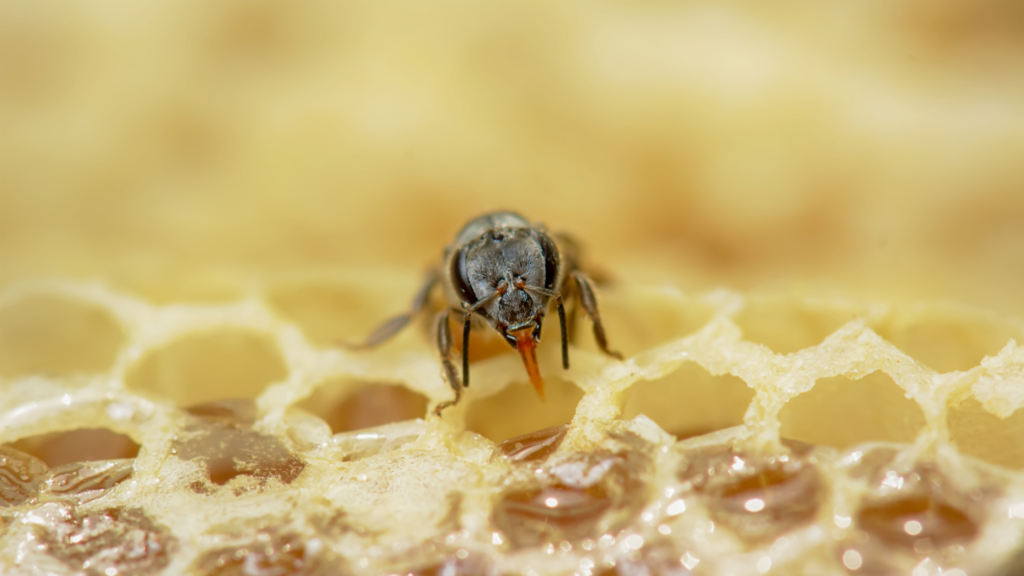Comb Honey
Exploring the Beauty of Comb Honey: Nature's Sweetest Creation
Comb honey, nature’s purest and most untouched form of honey, is a testament to the remarkable work of honeybees. Encased within their meticulously crafted beeswax comb, comb honey provides a unique and unadulterated honey experience. In this article, we will delve into the fascinating world of comb honey, exploring its production process, distinct characteristics, and the joys of indulging in this delectable treat.
Comb Honey:
Comb honey begins its journey within the intricate architecture of a honeybee hive. Honeybees collect nectar from flowers, which they carry back to the hive in their honey stomachs. Back at the hive, worker bees regurgitate the nectar into hexagonal cells made of beeswax. Through the process of evaporation and enzymatic activity, the moisture content decreases, and the nectar transforms into honey, filling the cells of the comb.
Comb honey represents the purest and most natural form of honey. The honeybees create the comb themselves, and it remains unprocessed and untouched by human hands. Unlike other forms of honey that undergo extraction and filtering processes, comb honey retains the distinct aromas, flavors, and textures of the specific floral sources from which the bees collected nectar.
The characteristic feature of comb honey lies in the delicate beeswax comb surrounding the honey. The comb showcases the intricate craftsmanship of honeybees and adds a beautiful aesthetic appeal. Comb honey often comes in small sections or squares, making it easy to appreciate the individual cells filled with golden honey. The flavor profile of comb honey varies depending on the flowers the bees visited, offering a diverse range of taste experiences.
Comb honey has a delightful and complex flavor, often described as rich, floral, and more intense compared to liquid honey. Each bite offers a burst of natural sweetness, accompanied by the unique nuances imparted by the floral sources. The texture of comb honey is slightly thicker and chewier than liquid honey, adding a satisfying mouthfeel that enhances the overall tasting experience.
Comb honey is a true delicacy that can be enjoyed in various ways. Here are some popular ways to savor comb honey:
- Pairings: Comb honey pairs exceptionally well with a variety of ingredients, such as cheeses, fruits, and bread. Enjoy it alongside a cheese platter for a delightful combination of flavors and textures.
- Spreading: Comb honey can be spread directly onto fresh bread, toast, or crackers. The soft, chewy comb adds a unique and indulgent layer of sweetness.
- Gourmet Accompaniment: Comb honey can elevate a range of dishes, from salads and desserts to charcuterie boards and gourmet recipes. Its natural elegance and purity make it an excellent addition to culinary creations.
- Culinary Exploration: Comb honey provides an opportunity for culinary exploration, allowing you to experiment with creative recipes, such as incorporating it into marinades, glazes, or even as a topping for ice cream.
Comb honey is highly sought after by honey connoisseurs and enthusiasts who appreciate its artisanal and unprocessed nature. It often comes in special packaging that showcases the honeycomb, adding a visual charm to its presentation. Comb honey makes for a unique and impressive gift for honey lovers and food enthusiasts alike.
To preserve the freshness and integrity of comb honey, it is essential to store it in a cool and dry place, away from direct sunlight. Ensure the container is airtight to prevent moisture absorption. Properly stored comb honey can maintain its quality for an extended period.
Comb honey is a truly special and unadulterated gift from the honeybees. Its pristine form, untouched by human intervention, allows us to savor the purest essence of honey. From the intricate beeswax comb to the rich and distinct flavors, comb honey offers a unique tasting experience and a visual delight. Embrace the beauty of comb honey and let it transport you to the mesmerizing world of bees and their extraordinary creations.
More From The Hive:

A Comprehensive Guide to Australian Honey: Types, Production, and Benefits
Australia is home to some of the world’s finest honey, known for its unique flavors, exceptional quality, and health benefits. Thanks to its diverse flora and pristine natural environment, Australia produces honey that reflects the rich biodiversity of its landscapes. Whether it’s the famous Manuka honey from the Leptospermum trees

An In-Depth Guide to Honey in the United States of America (USA): Types, Production, and Benefits
Honey, one of nature’s sweetest treasures, has been an integral part of human diets and cultures for thousands of years. In the United States of America (USA), honey production is not only a thriving industry but also a testament to the country’s diverse ecosystems. From the tropical blossoms of Florida

The Small Honey Bee (Apis florea): A Comprehensive Guide to One of Nature’s Tiny Pollinators
The Small Honey Bee, scientifically known as Apis florea, is one of the lesser-known species of honey bees, yet it plays a vital role in the ecosystems of Asia and parts of the Middle East. Despite its size, the Apis florea bee is a remarkable pollinator, and its unique biology

Exploring the Sweet Diversity of Canadian Honey: A Guide to Types and Flavors
Canada is home to a rich tapestry of landscapes and climates, each contributing to the unique flavors and types of honey produced across the country. From the prairies of Alberta to the forests of British Columbia, Canadian honey reflects the diverse flora that bees visit. In this blog, we will

The Rock Honey Bee (Apis laboriosa): Guardians of the Himalayan Honey
The Rock Honey Bee (Apis laboriosa) is an awe-inspiring species that thrives in the rugged landscapes of the Himalayas, where it builds massive nests on vertical cliffs. Known for producing highly prized wild honey and for its ability to endure extreme mountain conditions, this bee species has captivated researchers, beekeepers,

The Giant Honey Bee (Apis dorsata): Nature’s Fearless Honey Maker
The Giant Honey Bee, scientifically known as Apis dorsata, is a remarkable species native to South and Southeast Asia. Known for its impressive size, bold temperament, and incredible honey-producing capabilities, this bee plays a crucial role in the ecosystem and supports human livelihoods. Despite its importance, the Giant Honey Bee
